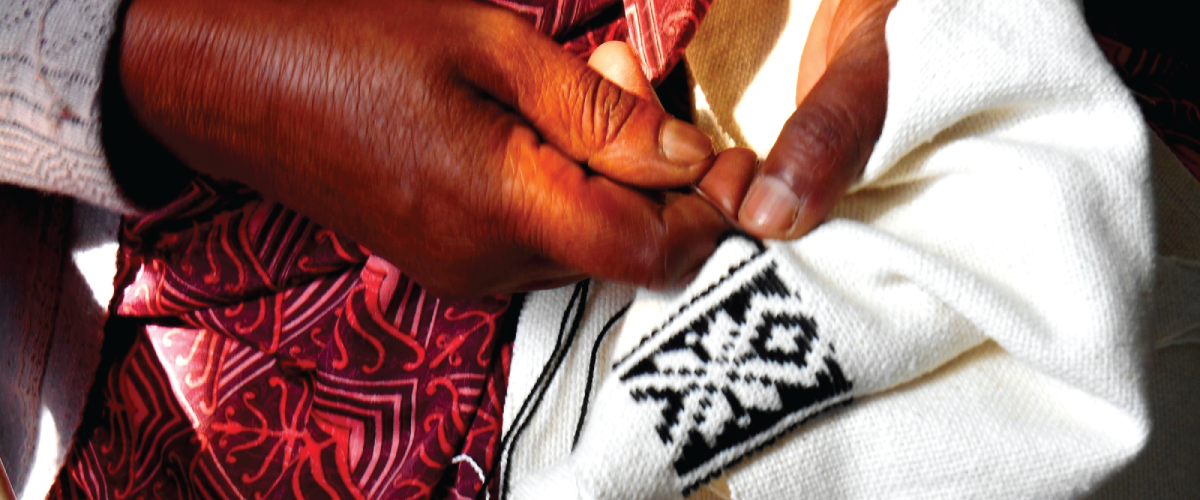“Take your needle, my child, and work at your pattern; it will come out a rose by and by. Life is like that – one stitch at a time taken patiently and the pattern will come out all right like the embroidery” – Oliver Wendell Holmes.
Last night, I rested my head on that old cushion; its cover bright with the black and red butterflies. I love that old cushion which brings back memories of mountains in a blue haze, the smell of pine and freshly brewed tea. But last night I had a different dream; I saw a lone stately figure silhouetted against the early morning sky, cloaked in black, white and red. I slept on, lulled by the whistling song of the thrush and the sound of the wind.
With dawn came the realization that the cloaked lone figure with his herd of buffalo is a symbol – of a simpler way of life, close to and one with nature, a way of life which is fast disappearing.
The Todas of the Nilgiris has for long fired the imagination of travelers with their striking looks, their customs and their origin.

You don’t see them in their traditional shawl so often today. But in the old days, it was quite common to see Toda men and women wrapped in their distinctive shawls picking their way carefully through the crowd near the Ooty market; the women, delicate with their intricate silver jewelry and their hair in long ringlets moistened with buffalo butter; the men tall and stately their faces calm and remote.
Early European travelers to the Nilgiris have all commented on the Todas; a tribe so different in looks and customs from the people living around, that stories and theories of their origin abound. One of the most popular of these theories is that they are of Greek descent. But let the anthropologists argue about that. What has intrigued me for long is the striking embroidery on the Pootkhula or traditional shawls.
The embroidery called ‘pukhoor’ in the Toda language is in black and red and is woven on a coarse cream or white cloth. Dr Tarun Chabbra, an Ooty-based dentist and authority on the Todas, in his book, The Toda Landscape, explains how in the early days, the Todas acquired coarse white or cream material from the Badaga (another group of indigenous people) intermediaries who in turn got it from the Chetty traders from the plains. The Todas, in the times gone by, also used the thorn of a particular plant to weave their beautiful designs, but switched to factory produced needles when they became available in the Nilgiri markets.
Similar to the arguments on the origin of the Todas, their embroidery and how they started doing it, is also a big question which anthropologists debate over, says Suryakumar Piljain, a Toda himself and the son of Evam Piljain, the well-known and prolific social worker among the Todas.

The embroidery is done only by the women and the designs are taken from their daily lives and from Nature. The motifs inspired by the rattan binding of their conical houses and temples, by butterflies, the sacred snakes, peacock’s tail feathers and so on. Piljain says that today, more modern motifs are emerging but the old designs are still popular.
Though the women sit together often under a tree after lunch their embroidery is very individualistic. It is not a leisure activity but just a part of the day’s work, says Piljain. They sew without a set pattern, inspired by their own imagination.
Embroidery styles are distinctive, and the Todas are able to identify whose handiwork and which village it comes from, by just looking at it. The women who are well-known for their needlecraft are from the villages around Ooty
The fabric is roughly woven off-white while the threads are black and red with an occasional blue. The needle often used is a single-stitch darning needle, though Linda Surendran, a Coimbatore-based housewife who learned to do Toda embroidery by just studying the patterns, uses a tapestry needle.
The embroidery is not done on a frame but by counting the warp and weft on the fabric and using the reverse stitch. Though most outsiders who buy Toda embroidery prefer the neater side, the Todas themselves favor the side on which a small amount of tuft is allowed to stand out.
Dr Chabbra started the Toda Nalvaazhu Sangham and worked for a GI tag for the Toda embrodiery along with another Nilgiri-based NGO, Keystone Foundation and the state handicraft development corporation, Poompuhar. The GI status will go a long way in ensuring that the Toda’s heritage is preserved and that the embroidery gets a good price on the market. This would ensure that the imaginative and excellent work done by women like Vangamalli, Anasinpuff, Thegamma and Puvzed get their due recognition.
Today Toda embroidery is available online. Designers and entrepreneurs like Sanjiv Sivaraman of Chirpy India and organisations like Gaatha source embroidered articles from the many NGOs who help the Todas market their products. In most cases, the roughly woven cloth has given way to a fabric of superior thread counts and now embroidery is done not just on the traditional shawl but also on a variety of articles that the upwardly mobile collect.
Featured images source credit: Gaatha

